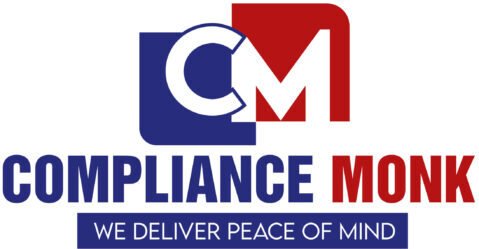
Because Every Employee Deserves a Safety Net
Provident Fund (PF) registration is more than just a legal requirement—it’s a commitment to your employees’ financial well-being. Under the Employees’ Provident Fund Organisation (EPFO), businesses must register to ensure their employees benefit from a structured savings and pension scheme.
Whether it’s retirement planning, medical emergencies, or unforeseen situations, a registered PF account provides long-term security.
Table of Contents
🔎 Understanding EPF: A Safety Net for Employees
The Employees’ Provident Fund (EPF) Scheme is a government-backed social security initiative designed to help employees build financial stability. It works through mandatory contributions from both the employer and employee, ensuring a solid retirement fund.
💰 When Can Employees Access Their EPF Funds?
Employees can withdraw from their EPF accounts under specific conditions:
- Retirement: Full withdrawal upon reaching 58 years of age.
- Unemployment: If unemployed for more than two months.
- Emergencies: Partial withdrawals allowed for medical treatments, education, or home loans.
- Family Support: In case of an unfortunate demise, the nominee receives the accumulated amount.
🏢 Who Needs PF Registration? (Hint: Most Businesses Do!)
📌 Mandatory Registration
🔹 Any business with 20 or more employees must register under EPFO.
🔹 Includes full-time, part-time, contractual, and temporary employees.
📌 Voluntary Registration
🔹 Businesses with fewer than 20 employees can opt for voluntary registration.
🔹 This boosts employee satisfaction and helps attract top talent.
📌 Deadlines Matter!
📍 PF registration must be completed within one month of meeting the 20-employee threshold. Delays can lead to penalties!
📍 In some cases, the Central Government can mandate PF registration for businesses with fewer than 20 employees.
💼 Employee & Employer Contributions – Who Pays What?
🔹 Employee Contribution:
✔ 12% of basic salary goes straight into the EPF account.
🔹 Employer Contribution:
✔ Matches 12% of basic salary, but split as follows:
- 3.67% to EPF
- 8.33% to Employee Pension Scheme (EPS)
📌 Pro Tip: Think of this as forced savings—your future self will thank you!
🌟 Why Employers Should Register for EPF?
🔹 Legal Compliance: Stay on the right side of the law and avoid penalties.
🔹 Financial Security for Employees: Boosts employee morale and retention.
🔹 Portable & Flexible: Employees can transfer PF accounts across jobs.
🔹 Pension Benefits: EPF includes the Employee Pension Scheme (EPS) for retirement income.
🔹 Emergency Funds: Employees can withdraw during medical or financial crises.
📌 Bottom Line: A well-managed PF scheme makes your business a more attractive workplace!
📜 Exemptions: Who Can Skip PF Registration?
Not every business needs to register. The EPF Act does not mandate registration for:
❌ Businesses with fewer than 20 employees (unless notified otherwise).
❌ Organizations already covered under other provident fund schemes.
Still unsure? Our experts at Compliance Monk can assess your eligibility and guide you!
📝 Documents Needed for PF Registration
📌 Business Documents:
✔ Certificate of Incorporation (Companies) / Partnership Deed / GST Registration.
✔ Address proof: Utility bills, rental agreement, or tax receipts.
✔ Bank details: Cancelled cheque & bank statement.
📌 Employer & Employee Documents:
✔ PAN & Aadhaar of the employer and employees.
✔ Employee details: Names, salaries, joining dates.
✔ Digital Signature Certificate (DSC) of the authorized signatory.
📌 Tip: Have all your documents handy to avoid delays in registration!
🖥 How to Apply for PF Registration Online?
1️ Submit Application: Register through the EPFO online portal.
2️ Document Verification: Authorities review your business details.
3️ Get Your PF Code: Once approved, you’ll receive a PF establishment code.
4️ Start Monthly Contributions: Ensure timely deposits to stay compliant.
🚀 Why Choose Compliance Monk for PF Registration?
- Hassle-Free Process: We handle everything—from application to approval.
- Affordable Pricing: No hidden charges, just transparent pricing.
- Compliance Assurance: Stay legally compliant without stress.
- End-to-End Support: We don’t just register—you get ongoing support for PF filings.
📞 Contact us today!
FAQs
1. What is PF registration, and who needs it?
PF registration is the process through which businesses enroll with the Employees’ Provident Fund Organisation (EPFO) to provide social security benefits to employees. Any company with 20 or more employees must register, while smaller businesses can opt for voluntary registration.
2. Why is PF registration important for employers?
It ensures legal compliance, helps employees build a retirement corpus, provides pension benefits, and enhances job satisfaction by offering financial security in emergencies.
3. What are the benefits of PF for employees?
Employees get long-term savings, pension benefits, insurance coverage, and emergency withdrawal options for medical needs, unemployment, or family crises.
4. What is the contribution structure for EPF?
Both employer and employee contribute 12% of the employee’s basic salary. The employer’s share is divided into:
- 8.33% towards the Employee Pension Scheme (EPS)
- 3.67% into the Provident Fund (EPF)
5. Can small businesses register for PF voluntarily?
Yes, businesses with fewer than 20 employees can voluntarily register to offer social security benefits and enhance employee retention.
6. How long does it take to complete PF registration?
Once all required documents are submitted, registration typically takes 7–10 working days, depending on EPFO’s verification process.
7. What happens after PF registration?
Employers receive a PF Establishment Code, after which they must start monthly contributions and file regular PF returns to remain compliant.
8. Are there any exemptions from mandatory PF registration?
Yes, businesses with fewer than 20 employees are generally exempt unless the government mandates it for specific industries.
9. Can an employee withdraw PF before retirement?
Yes, partial withdrawals are allowed under specific conditions like medical emergencies, home loans, education, and unemployment. Full withdrawal is permitted at retirement or after two months of unemployment.
10. What documents are required for PF registration?
Key documents include:
- Business registration proof (Certificate of Incorporation, Partnership Deed, GST registration)
- Employer and employee PAN & Aadhaar
- Bank details (Cancelled cheque, bank statement)
- Employee details (joining date, salary, designation)
11. How can I register for PF online?
You can apply through the EPFO online portal, submit the required documents, and receive your PF Establishment Code upon approval.
12. What are the penalties for non-compliance with PF regulations?
Failure to register or deposit PF contributions on time can result in financial penalties, interest charges, and legal consequences.
